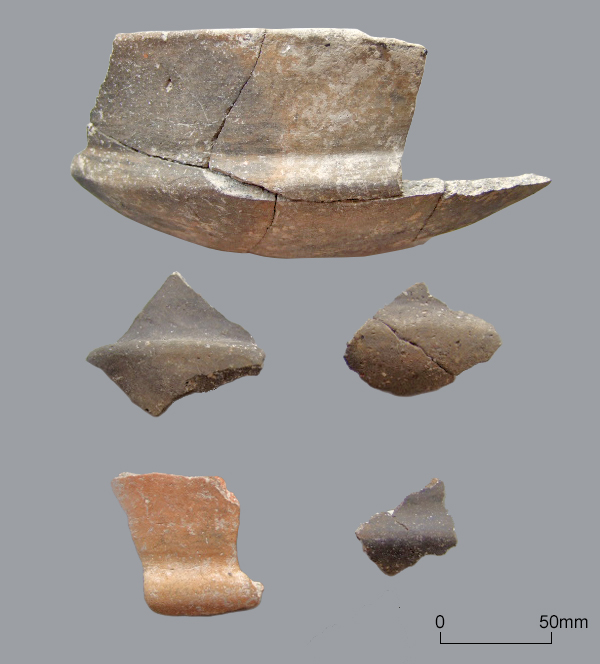
Early to Mid Iron Age fineware bowl with moulded shoulder, with sherds from similar vessels
Today’s image for VM_365 Day 163 shows some examples of a characteristic of pottery from the Early to Mid Iron Age period, dating around c.600-500 BC. This earliest phase of Early to Mid Iron Age pottery is epitomised by fineware bowls that have complex, moulded shoulders. The vessel form was based on examples that were coming in to Britain from North East France and other areas of the continent.
A fairly complete example of a vessel with this characteristic shape from Fort Hill Margate is shown at the top of the image. The four sherds below are from a series of other vessels showing variations of forms with the characteristic moulded shoulder that is typical of this period.
Vessels with this distinctive shape would not be easy to make, requiring careful and firm moulding at the shoulder junction. The pots frequently break at this point because the pieces of clay that make up the vessel’s body, formed of coils or slabs, are sometimes poorly joined together.
The bowl and sherds shown in the VM_365 image show how small, but very characteristic pottery sherds and fragments can be used to identify the potting traditions form a specific period that are represented among the many sherds that may be present among the finds recovered from an excavated feature, or in the assemblage of pottery from a site.
The VM is grateful to Nigel Macpherson Grant for the images and information for today’s post.